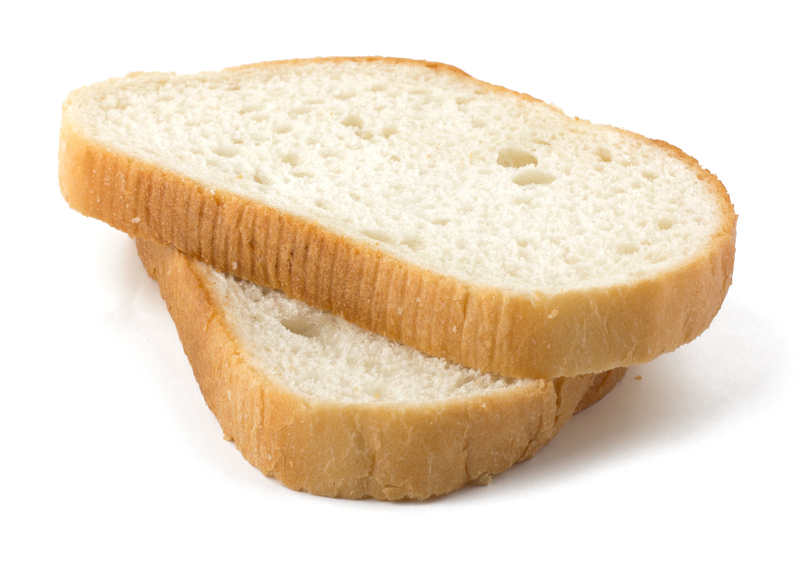Revitalize Your Enamel Trays: An Easy Grease-Busting Cleaning Guide
Posted on 10/06/2025
Revitalize Your Enamel Trays: An Easy Grease-Busting Cleaning Guide
If you love baking, roasting, or grilling, chances are you own a few enamel trays in your kitchen arsenal. Over time, these trusty pans can become coated with stubborn grease, burnt-on food, and unsightly stains. But don't worry -- in this comprehensive cleaning guide for enamel trays, we'll share all the tips and tricks you need to restore them to their original gleaming glory. Read on for step-by-step instructions, clever cleaning methods, preventive care advice, and more!
Understanding Enamel Trays: Why You Need Specialized Cleaning
Before diving into the grease-busting cleaning process, it helps to understand what makes enamel trays unique. Enamel trays consist of a metal base (often steel or cast iron) coated with a smooth, glossy layer of vitrified enamel. This coating is:
- Non-porous
- Resistant to rust
- Easy to clean (when handled correctly)
- Available in a variety of attractive colors
However, enamel trays can be prone to:
- Stubborn grease and food buildup
- Scratching or chipping from abrasive cleaners
- Staining if not cleaned promptly
With the right approach, you can revitalize your enamel trays without damaging their finish. Let's explore how to banish that baked-on grease and restore your enamel pans.

Essential Supplies for Cleaning and Grease Removal
For an effective and safe clean, gather the following supplies. Most are likely already in your kitchen!
- Warm water
- Mild dish soap
- Baking soda (sodium bicarbonate)
- White vinegar
- Non-abrasive sponge or soft cloth
- Plastic or silicone scrapers
- Rubber gloves (optional)
- Old toothbrush (for tricky crevices)
- Papertowels or microfiber towels
Avoid steel wool or harsh abrasives! These can scratch or chip your enamel tray, leading to damage over time.
The Complete Grease-Busting Cleaning Guide for Enamel Trays
1. Tackle Fresh Grease Quickly
The best method to clean enamel trays is to act fast. Whenever possible, wash your trays immediately after use.
- Let the pan cool to avoid thermal shock and cracks.
- Fill with warm, soapy water and soak for 15-20 minutes.
- Use a non-abrasive sponge to gently scrub away residue.
- Rinse and dry thoroughly with a towel.
This simple cleaning method prevents grease from setting and minimizes future effort.
2. How to Remove Stubborn Burnt-On Grease
If your enamel pans are suffering from heavily burnt-on grease or blackened stains, try this time-tested approach:
- Sprinkle baking soda liberally over greasy or stained areas.
- Pour hot water into the tray (caution: not boiling, as this can crack hot enamel) and allow to soak for 30 minutes.
- Use a plastic or silicone scraper to gently lift away softened residue.
- If needed, make a paste with baking soda and water, applying directly to the most stubborn spots. Let it sit for 15 minutes before scrubbing again.
- Rinse, then wash as usual with mild soap and a soft sponge.
This eco-friendly cleaning method harnesses the power of baking soda to lift away grease without damaging your enamelware.
3. The Vinegar Soak Solution for Difficult Enamel Grease
For truly tenacious stains, vinegar can help:
- Mix a solution of 1 part white vinegar to 1 part hot water.
- Fill the enamel tray so greasy areas are fully submerged.
- Let it soak for 30-45 minutes.
- For lingering marks, sprinkle baking soda directly onto a wet sponge, then gently rub the stains.
- Wash and rinse thoroughly.
Vinegar's mild acidity dissolves cholesterol in grease while removing discoloration from your enamel tray.
4. Baking Soda and Dish Soap Paste: Grease-Destroying Duo
This tried-and-true paste is perfect for ultra-sticky messes:
- Mix 2 tablespoons of baking soda with 1 tablespoon of dish soap and just enough water to form a spreadable paste.
- Apply the paste liberally to greasy spots and let sit for 15 minutes.
- Scrub in circles using a non-abrasive pad or old toothbrush.
- Rinse well and repeat as needed.
Preventing Grease Buildup on Enamel Trays
Cleaning is easier when you prevent excess grease in the first place! Get into these habits to keep your enamel cookware pristine:
- Line with parchment paper or silicone mats when baking or roasting to create a barrier.
- Remove and soak trays immediately after cooking, especially when dealing with high-sugar or high-fat foods.
- Avoid metal utensils which scratch and trap grease in microgouges.
- Never use oven cleaner or bleach -- these can corrode the enamel coating!
Handling Common Enamel Tray Cleaning Challenges
Dealing With Discoloration and Stubborn Stains
Some foods, like tomato sauces or sugary marinades, can leave colored stains on even the best enamel. Combat these with:
- Lemon juice or vinegar applied directly -- let sit, then wash.
- A soak in a diluted hydrogen peroxide solution (1:2 peroxide:water) for tough cases. Rinse thoroughly. (Use gloves and good ventilation.)
Restoring Dull or Cloudy Enamel
If your enamel tray has lost its shine, it may just be residue:
- Wash thoroughly with warm, soapy water and a soft cloth.
- Buff with a paste of baking soda and water using circular motions.
- Rinse and dry with a microfiber towel for a streak-free finish.
Getting Into Grooves and Corners
Sometimes grease hides where you can't reach! For small creases, an old toothbrush soaked in soapy water works wonders. You can also use a cotton swab for hard-to-reach crevices.
Advanced Tips for Safely Cleaning Enamel Oven Trays
Some enamel trays -- especially those used in commercial ovens or frequent roasting -- may need heavy-duty degreasing. Always avoid harsh chemicals or abrasives. Instead, use these advanced but gentle techniques:
Steam Cleaning
- Fill the tray with hot water and place in a heated oven (about 100-120?C / 210-250?F) for 15 minutes.
- The steam will loosen baked-on grease for easier cleaning.
The Salt Scrub Method
- While the tray is still warm (not hot!), sprinkle a layer of coarse salt.
- Use a damp, soft sponge to gently scrub the salt into stubborn spots.
- Rinse thoroughly; salt acts as a mild abrasive without scratching the enamel.
How to Protect and Maintain Your Enamel Trays for Longevity
Enamel tray restoration isn't hard, but a little care goes a long way! Here's how to keep your trays looking new:
- Store with care -- Avoid stacking trays unless you cushion between them with a soft cloth or paper towel.
- Never use enamel trays with deep chips or cracks. Exposed metal can rust, and chips can flake into food.
- Always let enamelware cool gently; rapid temperature changes can cause cracks.

Frequently Asked Questions About Enamel Tray Cleaning
Q: Can I use the dishwasher for my enamel trays?
A: While many enamel trays are labeled dishwasher safe, hand washing is preferred for deep cleaning and to avoid long-term dulling of the finish. The high heat and aggressive detergents in dishwashers can sometimes damage enamel coatings over time.
Q: Is it safe to use oven cleaner on my enamel roasting tin?
A: No! Most commercial oven cleaners and bleach are too harsh. They can damage or discolor the enamel. Stick to baking soda, vinegar, dish soap, or mild specialty cleaners designed for enamel cookware.
Q: What if my enamel tray has a persistent smell?
A: If grease or food odors linger, try soaking your washed tray with a mixture of warm water, a tablespoon of baking soda, and a bit of lemon juice. Let stand for 30 minutes, then rinse thoroughly.
Q: Can I restore chipped or cracked enamel trays?
A: Significant chips can't be repaired at home. For minor chips, there are food-safe enamel repair kits, but for anything affecting the usability (exposed metal, rust), it's best to replace the tray for safety.
Conclusion: Enjoy Sparkling, Grease-Free Enamel Trays
With the right grease-busting techniques, you can revitalize your enamel trays and keep them gleaming for years to come. Whether you're tackling a quick clean or restoring a well-used tray, these easy, effective cleaning steps will ensure your pans are always ready for your next kitchen adventure.
- Remember: Prevent buildup by acting fast after use, use gentle cleaners, and never reach for harsh abrasives.
- If you follow these tips, your enamelware won't just look spotless -- it'll last for generations.
With this easy grease-busting guide for cleaning enamel trays, your favorite pans will be back to their best -- shiny, safe, and ready to bring your next meal to life!





